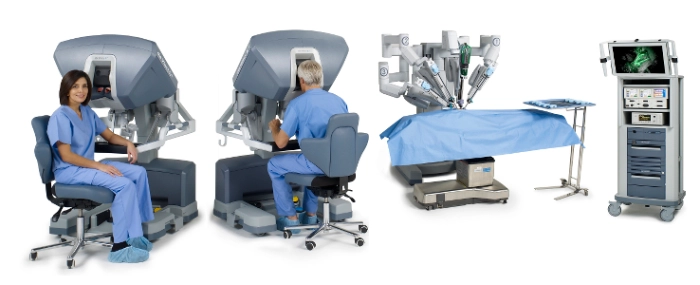
© 2016 Intuitive Surgical
Electronics Production |
How robots could fill a gap in health-care
Health-care providers and consumers will spend more than six billion dollars every year on artificial intelligence tools by 2021.
Market researcher Frost & Sullivan estimates that spending will increase from USD 633.8 million (2014) to USD 6,662.2 million (2021). And we’re not talking about the cute marshmallow-like Baymax from Big Hero 6 here.
Artificial Intelligence (AI) will make its way into every healthcare sector. Why? Simply because it can sieve through copious amounts of information. Furthermore, it will be able to remember all of it (and presumably use it to our advantage). This way, initial assessment of symptoms – and excluding illnesses that do not match those – will save both time and money. Especially for those hospitals that cannot afford a regular Dr. House.
AI could – as Frost & Sullivan expects – help to process 'unstructured data' (notes from previous exams, photos, reports, test results, etc.) and thus reduce the need for x-rays and other radiology scans significantly.
And let's face it, anything that can help our understaffed and – sometimes underpaid – hospital staff is a good thing. Probably the most widely known and used medical robot is the da Vinci Surgical System made by Intuitive Surgical.Typical use include minimally invasive thoracoscopic, cardiac or urological procedures.
However, even the da Vinci system – as with many robotic medical applications – is augmenting the surgeon’s or technician’s skill. It’s certainly not a replacement for its human operator and most industry insiders agree that we’re a long way off from true autonomy. If we ever get there.
Where we have come a little further is the care work as such. And here we are talking about robotic assistance. Assistance that should provide for a better life.
Adam Hagman, business developer / Healthcare at Swedish Robotdalen, explains: “When Swedish Robotdalen participated in a European questionnaire in which 26'000 Europeans were asked about their attitude towards the use of robots in healthcare, 4 percent of respondents said that robots will be used in the care of children, elderly and disabled. One in five thought that robots will be used in the healthcare sector as a whole."
“Incredibly large sums are invested in Europe to develop new technologies. Ministers of OECD countries are crying out for innovations. But there is also a healthcare industry that is more or less unprepared for the new technology. Politicians, engineers and medical professionals often speak completely different languages.”
In Sweden, a robot nurse in healthcare is far from relevant. People do not want robotic carers and nursing staff do not want to have them as colleagues.
However, one that seems to be more accepted is the Giraff, a robot that will assist those that live at home, but still do need some form of care. Giraff allows a caretaker (or family member) to virtually enter a home from a computer via the Internet. You could probably imagine a display for Skype conversations that follows you around the house. To observe personal space and privacy, the robot turns its display to a wall when not in use.
The caretaker would be able to check in with their clients, check living conditions, make small-talk or check on vitals. This would help a great deal towards efficiency as it cuts the number of home visits and the overall time spent on tasks such as this. This is not to say that Giraff – and similar robots – would or should replace the need for home visits any time soon.
One major obstacle for a wider acceptance and use of such care-robots is the issue of privacy – and to some degree interaction. Companies that produce and/or maintain such systems must be absolutely rigorous in their efforts to alleviate privacy concerns. It must be near impossible (and then some) for non-authorised personnel to access the device. If done right however, such robots could greatly improve the lives of caretakers and patients alike.
Adam will be joining us at TEC Lund 2016. Interested in knowing more? Please register here for the event.



